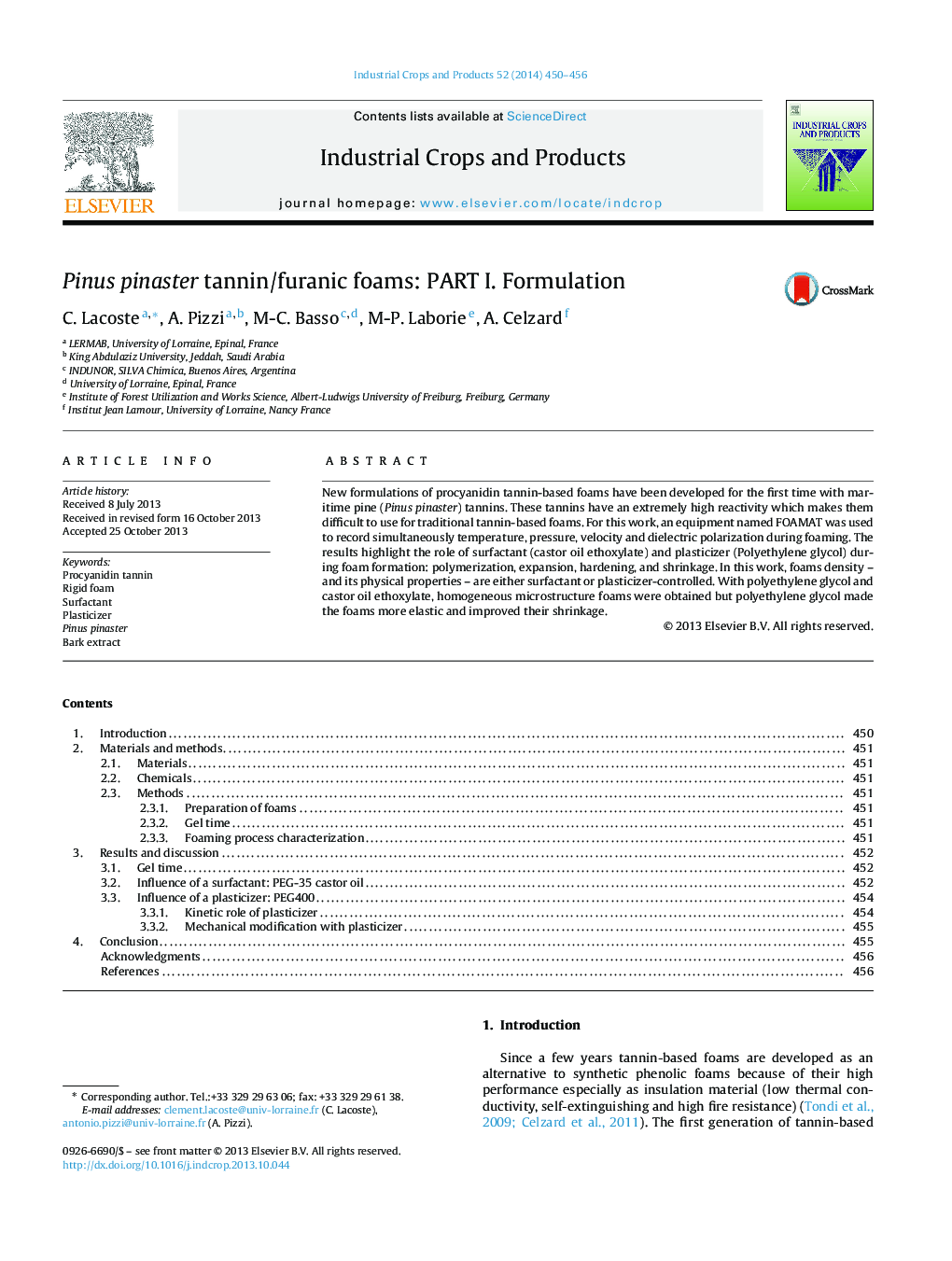| Article ID | Journal | Published Year | Pages | File Type |
|---|---|---|---|---|
| 4513447 | Industrial Crops and Products | 2014 | 7 Pages |
•Tannin-based foams were prepared with maritime pine (Pinus pinaster) tannin for the first time.•Gel time of maritime pine tannins and three aldehydes (formaldehyde, glyoxal, and glutaraldehyde) were measured under acid condition. Maritime pine tannins are highly purified and highly reactive in comparison with radiata crude tannins.•A non-ionic surfactant (castor oil ethoxylated) and a plasticizer (polyethylene 400) induced change in foam formulations to coordinate foam resin hardening, reaction exotherm and solvent blowing.
New formulations of procyanidin tannin-based foams have been developed for the first time with maritime pine (Pinus pinaster) tannins. These tannins have an extremely high reactivity which makes them difficult to use for traditional tannin-based foams. For this work, an equipment named FOAMAT was used to record simultaneously temperature, pressure, velocity and dielectric polarization during foaming. The results highlight the role of surfactant (castor oil ethoxylate) and plasticizer (Polyethylene glycol) during foam formation: polymerization, expansion, hardening, and shrinkage. In this work, foams density – and its physical properties – are either surfactant or plasticizer-controlled. With polyethylene glycol and castor oil ethoxylate, homogeneous microstructure foams were obtained but polyethylene glycol made the foams more elastic and improved their shrinkage.
